Preparing for removal takes a long time in Windows 11/10
In this article, we will introduce how to solve the problem of "Ready to delete" prompt when deleting files or folders in Windows system. This prompt means that the system is performing some background operations, such as checking file permissions, verifying whether the file is occupied by other programs, calculating the size of the item to be deleted, etc. We will provide you with some workarounds to ensure that you can successfully delete your files without waiting too long.
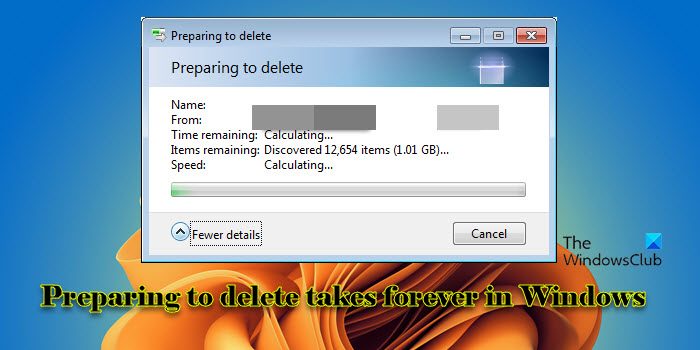
Why does Windows take so long to delete files?
The time it takes Windows to prepare a file for deletion is affected by a variety of factors, including file size, storage device speed, and background processes. A long or stuck "Preparing to delete" prompt may indicate insufficient system resources, disk errors, or file system issues.
In Windows 11/10, preparation for removal takes a long time
If you are never able to handle the Ready to Remove prompt on your Windows 11/10 PC, here are the fixes you can use:
Let’s look at this in detail.
1]Delete batch data
If you need to delete many files, especially large files, it is recommended that you delete them in parts or in batches instead of deleting all files at once.
2]Delete files in safe mode
You can also boot the system into safe mode and try to delete the files.
3]Optimize system resources
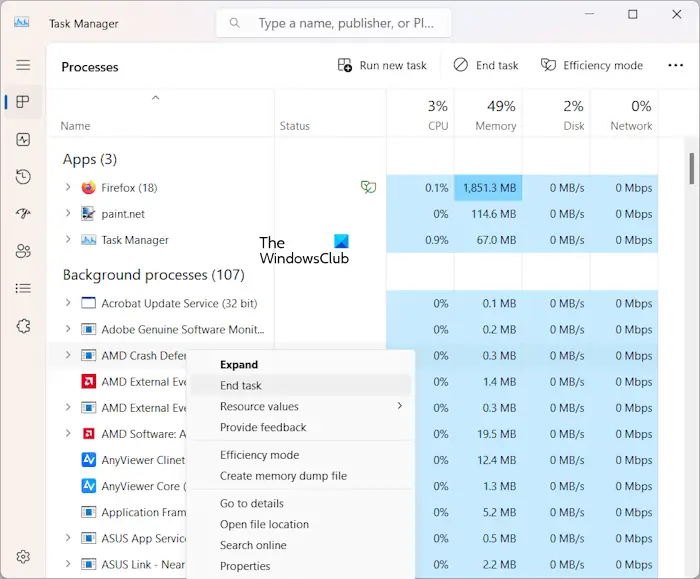
Optimizing system resources on Windows 11/10 PC helps speed up the file deletion process.
- Free up CPU resources by closing any unnecessary applications or background processes.
- Free up memory (RAM) resources by closing unused applications or reducing the number of open tabs in your browser.
- Release disk I/O resources by stopping or prioritizing disk-intensive tasks.
- If you are deleting files from a network drive or cloud storage, make sure there are no other network-intensive tasks running that could compete for bandwidth and slow down file deletion.
4]Optimize hard disk

Lack of free disk space, disk fragmentation, file system errors, and other disk-related factors can cause file deletion issues in Windows.
- Run the Disk Cleanup utility to remove temporary files, system files, and other items that take up unnecessary space on your disk.
- If your disk is severely fragmented, run the built-in Disk Defragmenter tool. This will reorganize the files on the disk and improve overall disk performance, potentially speeding up file deletion.
- Also, run Check Disk (CHKDSK). It will repair file system corruption, bad sectors, and other disk-related issues that may prevent files from being deleted properly.
5]Disable thumbnail preview
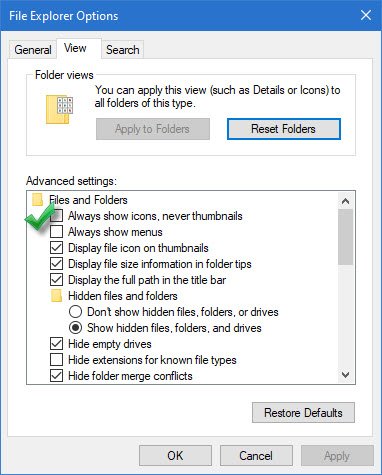
Generating and managing thumbnail previews can consume resources, increase disk I/O operations, and cause CPU and file system overhead, especially when processing a large number of files or large files.
Disabling thumbnail previews can effectively reduce the system resource consumption, disk I/O overhead, processing overhead, and file system overhead associated with managing the thumbnail cache on Windows PCs. This speeds up file deletion and fixes the 'Ready to delete' prompt. However, this also makes it less convenient to identify files based on their contents without opening the file. Therefore, we recommend enabling thumbnails again after the issue is resolved.
Follow these steps to disable thumbnail previews on Windows 11/10 PC:
Click the folder icon to open File Explorer. Click the three-dot icon in the top toolbar. Select options.
The Folder Options window will appear. Go to the View tab and check the box next to Always show icons, never show thumbnails under the Files and Folders section. Click Apply and then OK to save changes.
6]Disable Windows Search Indexer
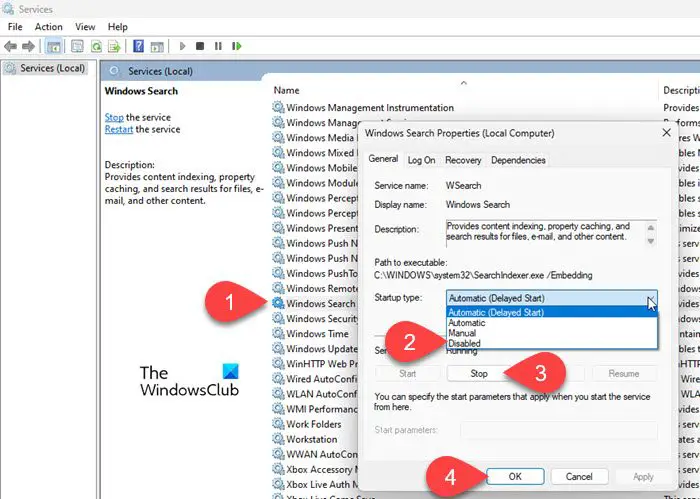
Windows Search Indexer is a background service that creates an index of files on the system hard drive to speed up searches. This option is only required when searching directories or folders or using functions that rely on indexed content.
Disabling Windows Search Indexer frees up system resources, reduces disk activity, and helps speed certain operations, including file deletion, on systems with slow hard drives or limited resources. Once you disable the service, Windows will no longer run it automatically.
Follow these steps to disable Windows Search Indexer on your Windows 11/10 PC and see if it helps:
Press Win R to open the run dialog box. Type services.msc and press Enter. Windows Service Manager will open. Scroll down to the bottom and find Windows Search in the list of services. Right-click it and select Properties from the context menu.
In the Windows Search Properties window, select Disabled from the Startup type drop-down menu under the General tab. If the service status is "Running", click the "Stop" button to terminate the service immediately. Click Apply and then OK to save changes.
To re-enable indexing, return to the same settings and change the startup type to automatic.
7]Disable remote differential compression
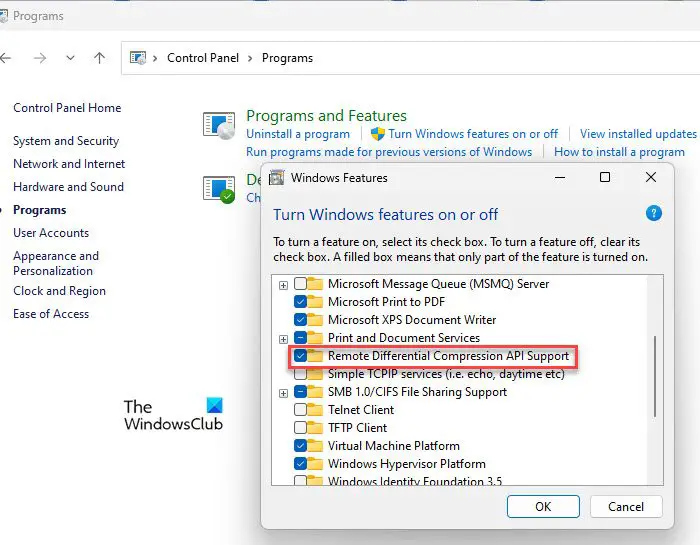
Remote Differential Compression (RDC) is a feature in the Windows operating system that helps optimize data transfer while synchronizing files between two computers over the network. Although disabling RDC may not directly affect the speed of the file deletion process on the local system, some users have reported that it helps improve overall system performance, especially during file manipulation scenarios.
To disable remote differential compression, perform the following steps:
Click on the Windows search box and enter ‘control’. Click Open next to Control Panel Options. In the Control Panel window, click Programs in the lower left corner. Then click Turn Windows features on or off under Programs and Features.
The Windows Features pop-up window will appear. Uncheck the box next to Remote Differential Compression API Support and click OK to apply the changes.
8] Use other methods to delete files
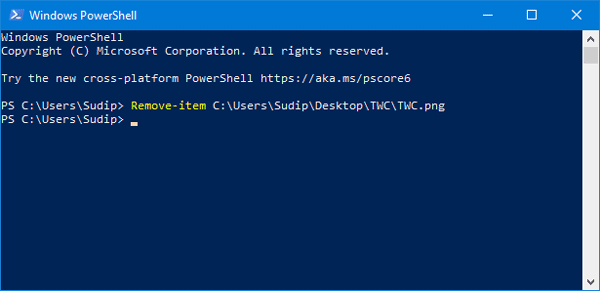
If File Explorer is slow or unresponsive, you can use other methods to delete files.
For example, you can use Command Prompt to delete files and folders, or use Windows PowerShell to force delete files or folders on your Windows PC.
To delete a file using the command prompt, open the command prompt with administrator rights and use the ‘cd’ command to navigate to the directory containing the file you want to delete. Then type the ‘del’ command followed by the name of the file you want to delete.
删除/f/a<;带扩展名的文件路径>;
To delete a folder, type the following command:
RD/S<;文件夹路径&>;
Similarly, to delete files using PowerShell, open PowerShell with administrator rights and type the following command:
Remove-Item;FILE_PATH_WITH_EXTENSION>;
To delete a folder, type the following command in the PowerShell window:
Remove-Item<;文件夹路径&>
You can also use third-party file cleaning tools to permanently delete unwanted files from Windows PC. Examples include OW Shredder and other Windows file shredder software.
I hope this helps.
The above is the detailed content of Preparing for removal takes a long time in Windows 11/10. For more information, please follow other related articles on the PHP Chinese website!

Hot AI Tools

Undresser.AI Undress
AI-powered app for creating realistic nude photos

AI Clothes Remover
Online AI tool for removing clothes from photos.

Undress AI Tool
Undress images for free

Clothoff.io
AI clothes remover

Video Face Swap
Swap faces in any video effortlessly with our completely free AI face swap tool!

Hot Article

Hot Tools

Notepad++7.3.1
Easy-to-use and free code editor

SublimeText3 Chinese version
Chinese version, very easy to use

Zend Studio 13.0.1
Powerful PHP integrated development environment

Dreamweaver CS6
Visual web development tools

SublimeText3 Mac version
God-level code editing software (SublimeText3)

Hot Topics
 1393
1393
 52
52
 1207
1207
 24
24
 Can I install mysql on Windows 7
Apr 08, 2025 pm 03:21 PM
Can I install mysql on Windows 7
Apr 08, 2025 pm 03:21 PM
Yes, MySQL can be installed on Windows 7, and although Microsoft has stopped supporting Windows 7, MySQL is still compatible with it. However, the following points should be noted during the installation process: Download the MySQL installer for Windows. Select the appropriate version of MySQL (community or enterprise). Select the appropriate installation directory and character set during the installation process. Set the root user password and keep it properly. Connect to the database for testing. Note the compatibility and security issues on Windows 7, and it is recommended to upgrade to a supported operating system.
 How to speed up the loading speed of PS?
Apr 06, 2025 pm 06:27 PM
How to speed up the loading speed of PS?
Apr 06, 2025 pm 06:27 PM
Solving the problem of slow Photoshop startup requires a multi-pronged approach, including: upgrading hardware (memory, solid-state drive, CPU); uninstalling outdated or incompatible plug-ins; cleaning up system garbage and excessive background programs regularly; closing irrelevant programs with caution; avoiding opening a large number of files during startup.
 How to solve mysql cannot connect to local host
Apr 08, 2025 pm 02:24 PM
How to solve mysql cannot connect to local host
Apr 08, 2025 pm 02:24 PM
The MySQL connection may be due to the following reasons: MySQL service is not started, the firewall intercepts the connection, the port number is incorrect, the user name or password is incorrect, the listening address in my.cnf is improperly configured, etc. The troubleshooting steps include: 1. Check whether the MySQL service is running; 2. Adjust the firewall settings to allow MySQL to listen to port 3306; 3. Confirm that the port number is consistent with the actual port number; 4. Check whether the user name and password are correct; 5. Make sure the bind-address settings in my.cnf are correct.
 Solutions to the errors reported by MySQL on a specific system version
Apr 08, 2025 am 11:54 AM
Solutions to the errors reported by MySQL on a specific system version
Apr 08, 2025 am 11:54 AM
The solution to MySQL installation error is: 1. Carefully check the system environment to ensure that the MySQL dependency library requirements are met. Different operating systems and version requirements are different; 2. Carefully read the error message and take corresponding measures according to prompts (such as missing library files or insufficient permissions), such as installing dependencies or using sudo commands; 3. If necessary, try to install the source code and carefully check the compilation log, but this requires a certain amount of Linux knowledge and experience. The key to ultimately solving the problem is to carefully check the system environment and error information, and refer to the official documents.
 How to pull the vertical reference line of PS
Apr 06, 2025 pm 08:18 PM
How to pull the vertical reference line of PS
Apr 06, 2025 pm 08:18 PM
Pull vertical guides in Photoshop: Enable ruler view (View > ruler). Hover the mouse over the vertical edge of the ruler, and then the cursor becomes a vertical line with double arrows and hold and drag the mouse to pull out the reference line. Click Delete by dragging the guide, or hovering it into a cross.
 MySQL can't be installed after downloading
Apr 08, 2025 am 11:24 AM
MySQL can't be installed after downloading
Apr 08, 2025 am 11:24 AM
The main reasons for MySQL installation failure are: 1. Permission issues, you need to run as an administrator or use the sudo command; 2. Dependencies are missing, and you need to install relevant development packages; 3. Port conflicts, you need to close the program that occupies port 3306 or modify the configuration file; 4. The installation package is corrupt, you need to download and verify the integrity; 5. The environment variable is incorrectly configured, and the environment variables must be correctly configured according to the operating system. Solve these problems and carefully check each step to successfully install MySQL.
 Unable to access mysql from terminal
Apr 08, 2025 pm 04:57 PM
Unable to access mysql from terminal
Apr 08, 2025 pm 04:57 PM
Unable to access MySQL from the terminal may be due to: MySQL service not running; connection command error; insufficient permissions; firewall blocks connection; MySQL configuration file error.
 How to copy and paste mysql
Apr 08, 2025 pm 07:18 PM
How to copy and paste mysql
Apr 08, 2025 pm 07:18 PM
Copy and paste in MySQL includes the following steps: select the data, copy with Ctrl C (Windows) or Cmd C (Mac); right-click at the target location, select Paste or use Ctrl V (Windows) or Cmd V (Mac); the copied data is inserted into the target location, or replace existing data (depending on whether the data already exists at the target location).




